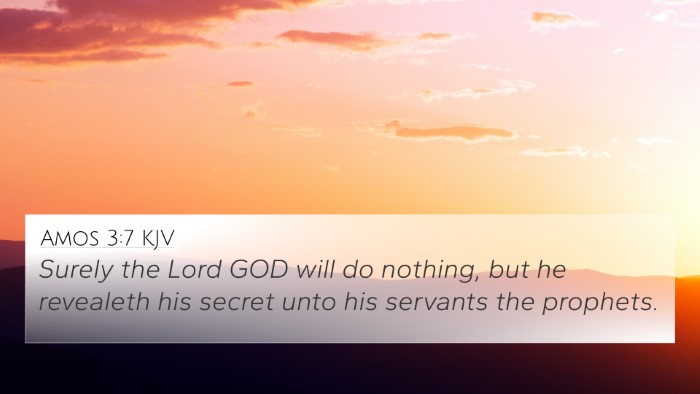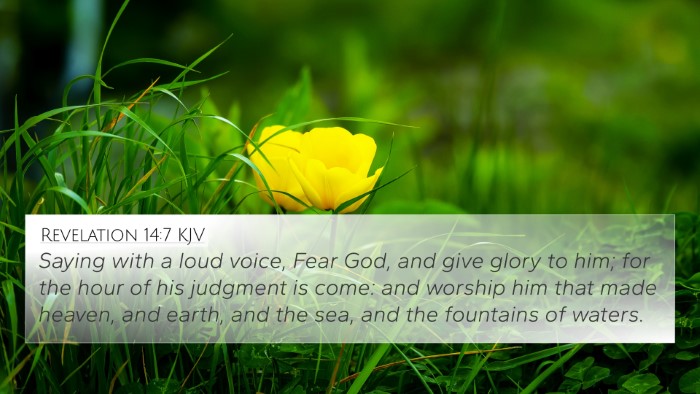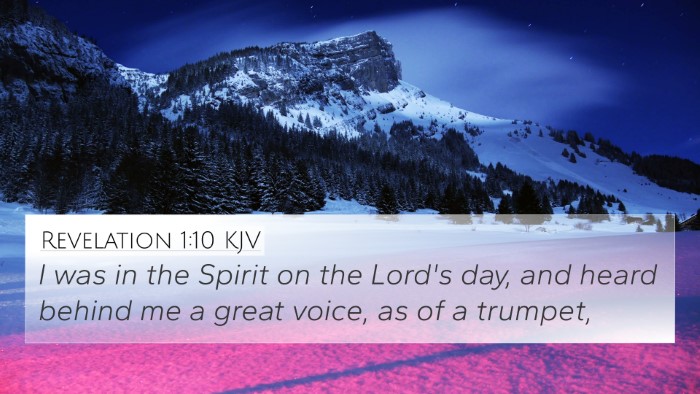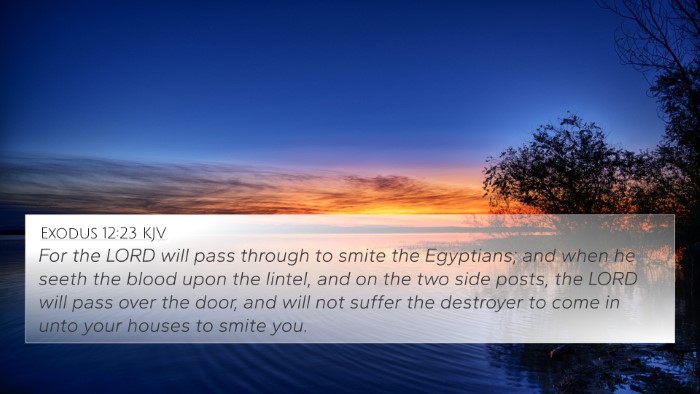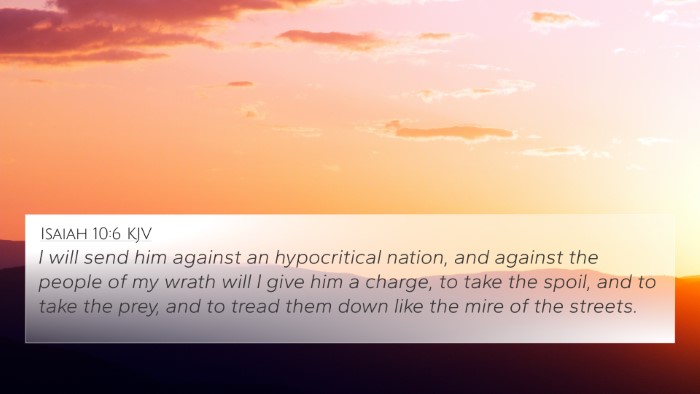Ezekiel 9:1 - Summary and Interpretation
Ezekiel 9:1 presents a vivid picture of God's judgment through the symbolism of marking those who are righteous and destined for salvation amidst a city facing destruction. This verse underscores the themes of divine accountability and the protection of the faithful. Below is an exploration of its meaning, supplemented by insights from respected public domain commentaries.
Context and Background
The prophet Ezekiel delivers messages during a tumultuous time for Israel, characterized by idolatry and impending judgment. Ezekiel 9:1 occurs within a prophetic vision that outlines the judgment upon Jerusalem, where God commands a certain angelic being to mark the foreheads of those who mourn for the abominations in the city.
Key Insights from Commentaries
-
Matthew Henry:
Henry notes that the call to those who mourn signifies the importance of righteous outrage against sin. The marking of the faithful symbolizes God's mercy amidst judgment—those who lament over sin are marked for salvation, highlighting a divine distinction in the midst of societal corruption.
-
Albert Barnes:
Barnes emphasizes the significance of the "mark" as a sign of protection. He explains that it represents a spiritual safeguard for those who remain obedient and distressed by the surrounding wickedness. The act of marking is both a preservation of the remnant and a statement of divine judgment against the unrepentant.
-
Adam Clarke:
Clarke elaborates on the imagery used in Ezekiel's vision, suggesting that the marking of the foreheads is a metaphorical representation of God's acknowledgment of His faithful people. He discusses the implications of this act, portraying it as a symbol of divine promise and deliverance from judgment.
Thematic Connections and Cross References
Ezekiel 9:1 can be connected to various other passages through thematic similarities and the exploration of divine judgment, mercy, and the role of the faithful. Below are seven key cross-references that provide depth to the understanding of this verse:
- Revelation 7:3-4: The sealing of the servants of God on their foreheads parallels the act of marking in Ezekiel, signifying divine protection for the faithful during times of turmoil.
- Exodus 12:13: The blood on the doorposts during the Passover serves as a mark of protection from judgment, aligning with the concept of being marked for salvation.
- Jeremiah 5:1: The search for one righteous person reflects the divine scrutiny of humanity’s actions, similar to the call to mark the mourners in Ezekiel.
- Matthew 24:22: The mention of the elect being saved in the end times echoes the theme of preservation for the faithful amidst widespread destruction.
- 2 Peter 2:9: Peter's assertion that the Lord knows how to rescue the godly from trials connects with God’s protective marking described in Ezekiel.
- Psalms 91:7-8: The assurance of safety for those who trust in the Lord reinforces the protective aspect of being marked by God.
- Romans 8:33-34: The concept of God justifying and protecting the faithful provides a New Testament perspective on divine favor, resonating with the marking in Ezekiel.
Understanding Through Cross-Referencing
To deepen your understanding of Ezekiel 9:1, engaging in cross-referencing proves invaluable. This technique involves linking various Bible verses to assess their interconnections and thematic undertones. Here are some tools and methods to assist in this study:
- Bible Concordance: Utilize a concordance to locate terms and themes associated with Ezekiel 9:1, facilitating connections to other verses.
- Bible Cross-Reference Guide: Explore guides specifically designed for cross-referencing that provide contextual relationships among verses.
- Cross-Reference Bible Study: Implement structured studies focusing on thematic elements present in Ezekiel 9:1 and related scriptures.
- Comprehensive Bible Cross-Reference Materials: Access extensive materials that analyze and categorize verses by theme, enhancing insights into interrelated scripture.
- How to Use Bible Cross-References: Learn effective strategies for identifying connections, which can broaden your understanding of the entire Biblical narrative.
Conclusion
Ezekiel 9:1 offers profound insights into the dual themes of judgment and mercy within God's plan. The act of marking the faithful provides an encompassing message of hope for those who respond with a broken spirit to the sin around them. By engaging in comparative Bible verse analysis and drawing on relevant connections, we gain a richer understanding of the nature of God’s justice and grace.
As you explore this verse further, consider how the practice of cross-referencing not only enhances understanding but also unveils the intricate dialogues between various books of the Bible.







